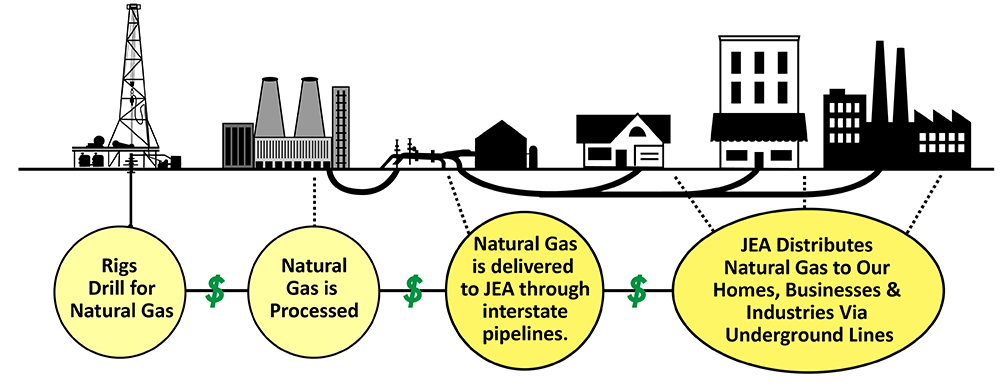How Natural Gas Gets to Our Homes, Businesses, & Industries

The process of getting gas out of the ground and to a premise requires a great deal of work. Production companies locate and extract gas from underground reservoirs through various forms. The raw natural gas gets processed to remove other trace compounds, gases, oil and water. This step is important to ensure that the end use gas is as clean and pure as possible. From there, the end-use gas must be transported great distances through a complex network of pipelines to the local gas utilities. These utilities receive the gas at a gate station and reduce the pressure from transmission levels to distribution levels and also add odorant to make the gas detectable by sense of smell. From the gate station, the gas moves into distribution gas mains that range in diameter based on volume and pressures needed. From the mains, the gas flows to the premise through service lines. The pressure is reduced again and your usage is metered prior to entering your home.
Natural Gas Utilities in America
Most users receive natural gas from a local gas utility, referred to as a local distribution company (LDC). These LDC’s are regulated utilities involved in the delivery of natural gas to consumers within a specific geographic area. There are two basic types of natural gas utilities: investor-owed and public-owned.
What is Public Natural Gas?
Public natural gas refers to not-for-profit natural gas utilities owned and operated by a municipality, state or federal government. Simply stated, public natural gas utilities are directly accountable to the people they serve through local operations, not shareholders. They are community-owned, with benefits such as:
- Not-for-profit status
- Locally controlled
- Competitive rates
- Responsiveness to customer concerns
- Community investment
- Local employment
- Quicker response times
- Economic development
Jackson Energy Authority is one of the roughly 1,000 public natural gas utilities in the United States. Although small in comparison, the community impact is huge as they provide reliable, efficient, environmentally-friendly natural gas in the safest means possible. In recognition of safe delivery, the American Public Gas Association (APGA) honored JEA with the highest honors of Gold Level System Operation Achievement Recognition (SOAR) for excellence in gas utility operations. This recognition, which lasts for three years, recognizes public natural gas utilities that demonstrate commitment to excellence in four areas: system integrity, system improvement, employee safety and workforce development.
